NEDOCROMIL SODIUM
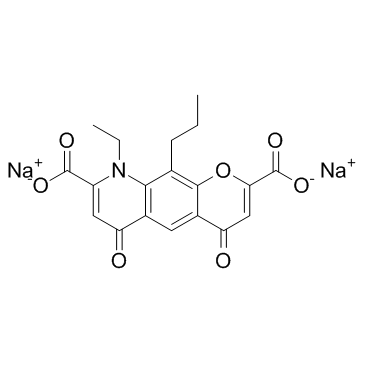
NEDOCROMIL SODIUM structure
|
Common Name | NEDOCROMIL SODIUM | ||
|---|---|---|---|---|
| CAS Number | 69049-74-7 | Molecular Weight | 415.30400 | |
| Density | N/A | Boiling Point | 645.5ºC at 760 mmHg | |
| Molecular Formula | C19H15NNa2O7 | Melting Point | N/A | |
| MSDS | Chinese USA | Flash Point | 344.2ºC | |
Use of NEDOCROMIL SODIUMNedocromil sodium suppresses the action or formation of multiple mediators, including histamine, leukotriene C4 (LTC4), and prostaglandin D2 (PGD2). |
| Name | nedocromil sodium |
|---|---|
| Synonym | More Synonyms |
| Description | Nedocromil sodium suppresses the action or formation of multiple mediators, including histamine, leukotriene C4 (LTC4), and prostaglandin D2 (PGD2). |
|---|---|
| Related Catalog | |
| Target |
Histamine LTC4 PGD2 |
| In Vitro | Nedocromil inhibits the release of histamine, LTC4, and PGD2 from mast cells challenged with antigen (with IC30 values of 2.1 μM, 2.3 μM, and 1.9 μM, respectively) and with anti-human IgE (IC30 values of 4.7 μM, 1.3 μM, and 1.3 μM, respectively)[1]. |
| In Vivo | Nedocromil-treated diabetic mice show significantly improved heart function compared with controls. The contractility and relaxation forces show similar improvements. However, the cardiac function of Nedocromil-treated diabetic mice remains significantly impaired when compared with normal mice. Nedocromil can significantly improve cardiac function in mice with diabetic cardiomyopathy, but the treatment cannot restore normal function[2]. |
| Animal Admin | Mice[2] 8-12 weeks old C57/BL6 male mice between 23-25 g receive intraperitoneal (i.p.) injections of 50 mg/kg Streptozotocin (STZ), dissolved in 100 mM citrate buffer pH 4.5, for five consecutive days. Diabetic mice (13-week-old) are randomly divided into three groups: 1) untreated group; 2) Nedocromil group, with Nedocromil released at the rate of 30 mg/kg per day from a subcutaneous (s.c.) pellet implantation; and vehicle group, with an inactive pellet implanted. Normal mice (non-diabetic) and normal mice that receive Nedocromil (30 mg/kg per day) are also included in this study for comparison. All sample groups included 15 mice (n=15)[2]. |
| References |
| Boiling Point | 645.5ºC at 760 mmHg |
|---|---|
| Molecular Formula | C19H15NNa2O7 |
| Molecular Weight | 415.30400 |
| Flash Point | 344.2ºC |
| Exact Mass | 415.06400 |
| PSA | 132.47000 |
| InChIKey | JQEKDNLKIVGXAU-UHFFFAOYSA-L |
| SMILES | CCCc1c2oc(C(=O)[O-])cc(=O)c2cc2c(=O)cc(C(=O)[O-])n(CC)c12.[Na+].[Na+] |
| Storage condition | 2-8°C |
| RIDADR | NONH for all modes of transport |
|---|
| Precursor 9 | |
|---|---|
| DownStream 0 | |
|
The role of the Annexin-A1/FPR2 system in the regulation of mast cell degranulation provoked by compound 48/80 and in the inhibitory action of nedocromil.
Int. Immunopharmacol. 32 , 87-95, (2016) 1.We investigated the role of Annexin (ANX)-A1 and its receptor, ALX/FPR2, in the regulation of mast cell degranulation produced by compound 48/80. 2.Both human cord-blood derived mast cells (CBDMCs) ... |
| Nedocromil sodium (USAN) |
| Tilarin |
| disodium 9-ethyl-6,9-dihydro-4,6-dioxo-10-propyl-4H-pyrano[3,2-g]-quinoline-2,8-dicarboxylate |
| dissodium 9-ethyl-6,9-dihydro-4,6-dioxo-10-propyl-4H-pyrano<3,2-g>quinoline-2,8-dicarboxylate |
| 9-ethyl-6,9-dihydro-4,6-dioxo-10-propyl-4H-pyrano[3,2-g]quinoline-2,8-dicarboxylic acid disodium salt |
| Alocril |
| disodium,9-ethyl-4,6-dioxo-10-propylpyrano[3,2-g]quinoline-2,8-dicarboxylate |
| Nedocromil sodium |
| UNII-ET8IF4KS1T |
| disodium 9-ethyl-4,6-dioxo-10-propyl-4H,6H pyrano[3,2-g]quinoline-2,8-dicarboxylate |
| di-sodium 9-ethyl-4,6-dioxo-10-propyl-4H,6H-pyrano[3,2-g]quinoline-2,8-dicarboxylic trihydrate |
| Tilade |
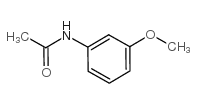 CAS#:588-16-9
CAS#:588-16-9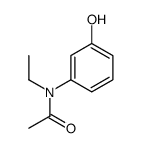 CAS#:98331-45-4
CAS#:98331-45-4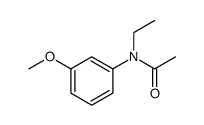 CAS#:98331-43-2
CAS#:98331-43-2![Acetamide, N-[3-(acetyloxy)phenyl]-N-ethyl Structure](https://image.chemsrc.com/caspic/403/98331-47-6.png) CAS#:98331-47-6
CAS#:98331-47-6 CAS#:69049-62-3
CAS#:69049-62-3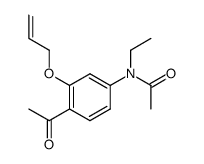 CAS#:69049-63-4
CAS#:69049-63-4 CAS#:69049-64-5
CAS#:69049-64-5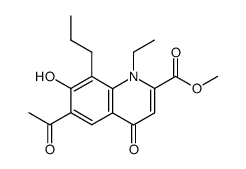 CAS#:69049-70-3
CAS#:69049-70-3![1-[4-(ETHYLAMINO)-2-HYDROXY-3-PROPYLPHENYL]ETHAN-1-ONE Structure](https://image.chemsrc.com/caspic/181/69049-68-9.png) CAS#:69049-68-9
CAS#:69049-68-9